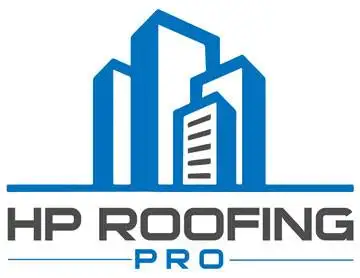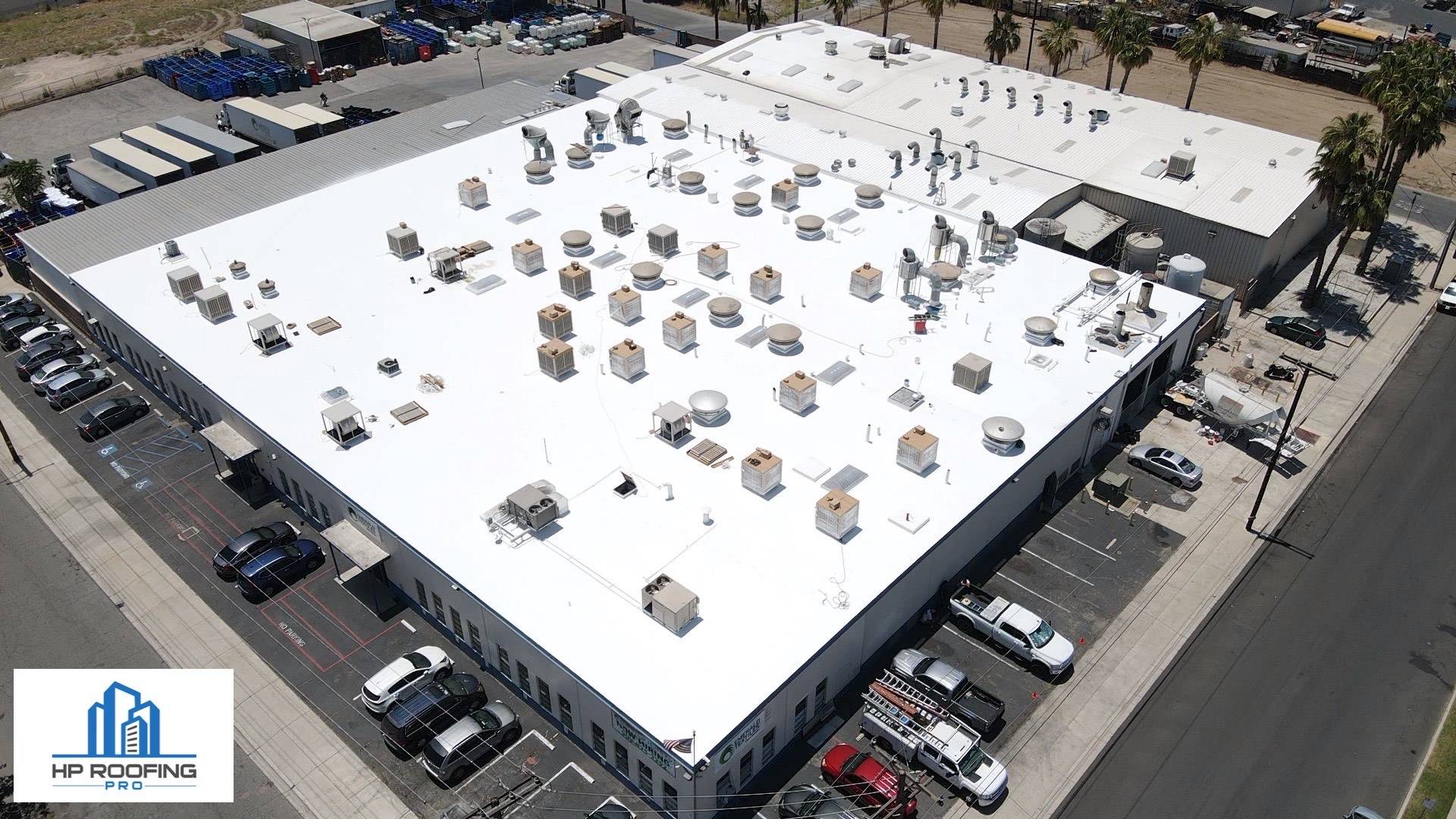Mon - Fri 7:00 am - 4:30 pm
601 South Palm Ave, Alhambra, CA 91803
Posted by hproofingpro No Comments on Unlocking the Benefits of Cool Roofs for LEED Certification Roofing
Unlocking the Benefits of Cool Roofs for LEED Certification
When it comes to achieving LEED (Leadership in Energy and Environmental Design) certification, building owners and developers are constantly seeking innovative strategies that offer energy efficiency, sustainability, and cost savings. One such solution that has gained significant attention is the installation of cool roofs. Cool roofs, designed to reflect sunlight and absorb less heat than conventional roofs, have proven to be instrumental in meeting LEED criteria. In this article, we will explore how cool roofs contribute to obtaining LEED certification and their benefits regarding energy conservation and reduced cooling costs.
Features of Cool Roofs
Cool roofs boast several distinctive features that set them apart from traditional roofs. They leverage advanced technologies and materials to create a more energy-efficient and sustainable building envelope. Here are the key features of cool roofs:
Reflectivity
Cool roofs are engineered to reflect a higher percentage of sunlight than conventional roofs. By utilizing specially designed roofing materials, they effectively bounce off solar radiation, reducing heat absorption and minimizing thermal transfer into the building. This reflective quality is vital in reducing the cooling load and energy consumption during hot summer months.
Low Heat Absorption
In addition to their high reflectivity, cool roofs are adept at absorbing less heat than their traditional counterparts. Cool roofs prevent excessive heat buildup on the roof’s surface through innovative material composition and surface treatment. They mitigate heat transfer by reducing heat absorption into the building, improving thermal performance and indoor comfort.
Advantages of Cool Roofs for LEED Certification
Now that we have examined the features of cool roofs, let us delve into the advantages they offer regarding LEED certification. Cool roofs significantly contribute to various LEED credit categories, demonstrating their efficacy in achieving sustainable and energy-efficient buildings. Here are the key advantages of cool roofs for LEED certification:
1. Energy and Atmosphere (EA)
The Energy and Atmosphere category within LEED emphasizes energy efficiency and reduction in environmental impact. Cool roofs play a pivotal role in meeting the requirements for energy optimization. By reducing the energy consumption associated with cooling, cool roofs enable building owners to achieve the specified percentage of energy savings outlined in the EA credits. The energy targets LEED sets can be effectively met through precise building design modeling and incorporating energy-efficient measures like cool roofs.
2. Indoor Environmental Quality (IEQ)
Cool roofs positively impact indoor environmental quality, contributing to LEED credits in this category. By minimizing heat absorption through their reflective properties, cool roofs help maintain lower roof temperatures. This, in turn, reduces the demand for air-conditioning, creating a more comfortable indoor environment for occupants. The improved thermal comfort provided by cool roofs aligns with the goals of the IEQ credits, particularly those related to Thermal Comfort and Daylight.
3. Materials and Resources (MR)
LEED Materials and Resources category focuses on sustainable material choices and waste reduction. Cool roofs actively support these goals by reflecting solar radiation and combating the urban heat island effect. By reducing the heat absorbed by buildings, cool roofs reduce the demand on the energy grid and alleviate the strain on resources. This ability to mitigate the heat island effect and conserve energy aligns with the MR credits for Sustainable Sites, specifically the “Heat Island Reduction” credit.
4. Innovation and Design (ID)
Cool roofs represent an innovative and sustainable solution for buildings, making them ideal candidates for earning Innovation and Design (ID) credits under LEED. Building owners demonstrate their commitment to energy efficiency and environmental stewardship by embracing cool roofs. The implementation of cool roofs showcases forward-thinking design choices and solutions, thus contributing to the ID credits that reward innovative strategies.
Benefits of Cool Roofs for LEED Certification
The advantages of installing cool roofs extend beyond their contribution to LEED certification. Let’s explore the benefits that cool roofs offer in terms of energy conservation, cost savings, and environmental impact:
1. Energy Savings
Cool roofs are powerful allies in reducing energy consumption. By reflecting a significant amount of sunlight, they minimize heat transfer into the building, reducing the need for cooling systems to work harder. This translates into lower energy usage and decreased reliance on air-conditioning during hot summer. As a result, building owners can experience substantial energy savings and enjoy reduced utility bills.
2. Cost Savings
The energy efficiency afforded by cool roofs directly translates into cost savings for building owners. Lower energy consumption significantly reduces cooling costs, leading to long-term financial benefits. Building owners can recoup their initial investment by investing in cool roofs through lower utility bills and enhanced operational efficiency.
3. Enhanced Durability
Cool roofs are often designed with durable materials that withstand the elements more effectively than traditional ones. The reflective surface and reduced heat absorption help to minimize thermal expansion and contraction, thereby reducing the risk of cracks and other forms of damage. The increased durability of cool roofs results in longer roof life cycles, reducing the need for frequent repairs or replacements.
4. Environmental Impact
Cool roofs positively contribute to the environment by reducing the urban heat island effect. Conventional roofs absorb significant heat in urban areas, raising local temperatures and exacerbating energy demands. Cool roofs, with their high reflectivity and low heat absorption, help mitigate this effect by reducing the amount of heat transferred into the atmosphere. Cool roofs help create a more sustainable and livable environment by combating the urban heat island effect.
5. Improved Comfort
The roof’s temperature can greatly influence the thermal comfort inside a building. Cool roofs allow occupants to enjoy a more comfortable indoor environment, especially during hot weather. By reducing the heat the roof absorbs, cool roofs contribute to a cooler interior space, minimizing the reliance on air-conditioning systems. This enhances occupant comfort and promotes a more sustainable and energy-efficient building operation.
6. Long-Term Value
Investing in cool roofs offers long-term value for building owners. With their energy-saving capabilities, extended durability, and reduced maintenance needs, cool roofs provide a solid return on investment. The cost savings and environmental benefits realized over the roof’s lifespan contribute to the building’s overall value and market appeal.
Conclusion
Cool roofs represent a powerful tool for building owners and developers aiming to achieve LEED certification and create sustainable, energy-efficient buildings. With their ability to reflect sunlight and absorb less heat, cool roofs offer many benefits, including energy savings, cost savings, enhanced durability, and reduced environmental impact. By embracing the installation of cool roofs, building owners take a significant step towards meeting LEED criteria while simultaneously reaping the advantages of energy efficiency and sustainability. As the demand for green buildings continues to rise, cool roofs emerge as a valuable asset in pursuing a more sustainable and environmentally conscious future.
Recent Posts
Categories
Recent Posts
Do you have any questions?
Contact us at The HP Roofing PRO office or submit a business inquiry online
Contact Us






